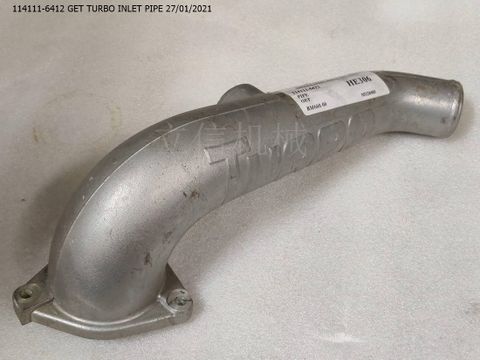
TURBO INLET PIPE
Kali terakhir kemas kini
Harga:
R.F.Q
Share Product:
Butiran
A cracked turbocharger inlet pipe can lead to several problems, which can affect the performance, efficiency, and reliability of the engine. Here are some potential issues that can arise from a cracked turbocharger inlet pipe:
Loss of Boost Pressure: The turbocharger inlet pipe is responsible for delivering pressurized air from the turbocharger to the engine's intake manifold. A crack in the inlet pipe can lead to a loss of boost pressure, causing a decrease in engine performance and power output. Without sufficient boost pressure, the engine may experience reduced acceleration, slower throttle response, and overall decreased performance.
Air Leakage: A cracked turbocharger inlet pipe can result in air leakage, allowing unmetered air to enter the engine's intake system. This can disrupt the air-fuel ratio and lead to a lean fuel mixture, which can cause rough idling, engine misfires, hesitation during acceleration, and poor fuel economy. Additionally, air leakage can trigger the engine's check engine light and lead to diagnostic trouble codes related to fuel trim or oxygen sensor readings.
Turbocharger Efficiency: A cracked inlet pipe can also affect the efficiency of the turbocharger itself. Air leakage from the cracked pipe can cause the turbocharger to work harder to maintain desired boost levels, leading to increased turbo lag, reduced turbocharger efficiency, and potentially premature wear or damage to the turbocharger components.
Engine Overboost or Overspeed: In some cases, a cracked inlet pipe may lead to unintended overboost or overspeed conditions in the turbocharger. If the crack allows excessive amounts of air to enter the engine, it can cause the turbocharger to produce higher-than-normal boost pressure levels. This can result in engine overboosting, which can lead to engine damage or failure if not addressed promptly.
Noise and Vibration: A cracked turbocharger inlet pipe may produce abnormal noise and vibration during engine operation. This can be caused by air leakage, turbocharger imbalance, or movement of the cracked pipe against other engine components. Excessive noise and vibration can negatively impact vehicle comfort and may indicate underlying issues that require attention.
Reduced Engine Efficiency: Overall, a cracked turbocharger inlet pipe can lead to reduced engine efficiency and performance. The engine may struggle to produce power efficiently, leading to decreased fuel economy, increased emissions, and potential drivability issues. Additionally, if left unaddressed, a cracked inlet pipe can contribute to further damage to engine and turbocharger components, leading to costly repairs.
In summary, a cracked turbocharger inlet pipe can lead to loss of boost pressure, air leakage, reduced turbocharger efficiency, engine overboost or overspeed conditions, noise and vibration, and reduced engine efficiency and performance. Prompt detection and repair or replacement of a cracked inlet pipe are essential to ensure the reliable and efficient operation of the engine and turbocharger system.
Spesifikasi
| Kata kunci | |
| Jenama | |
| Asal | MY |
Katalog Download